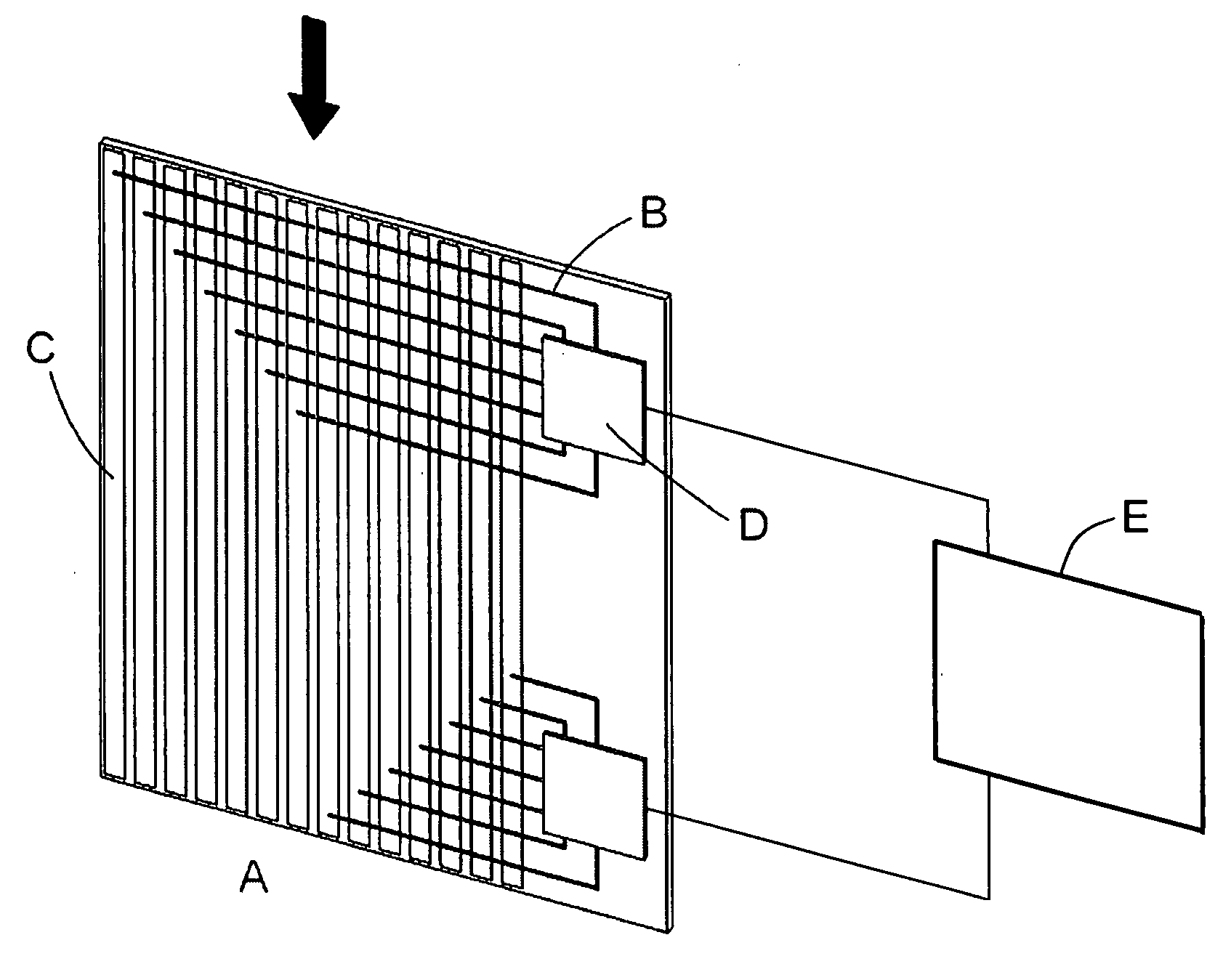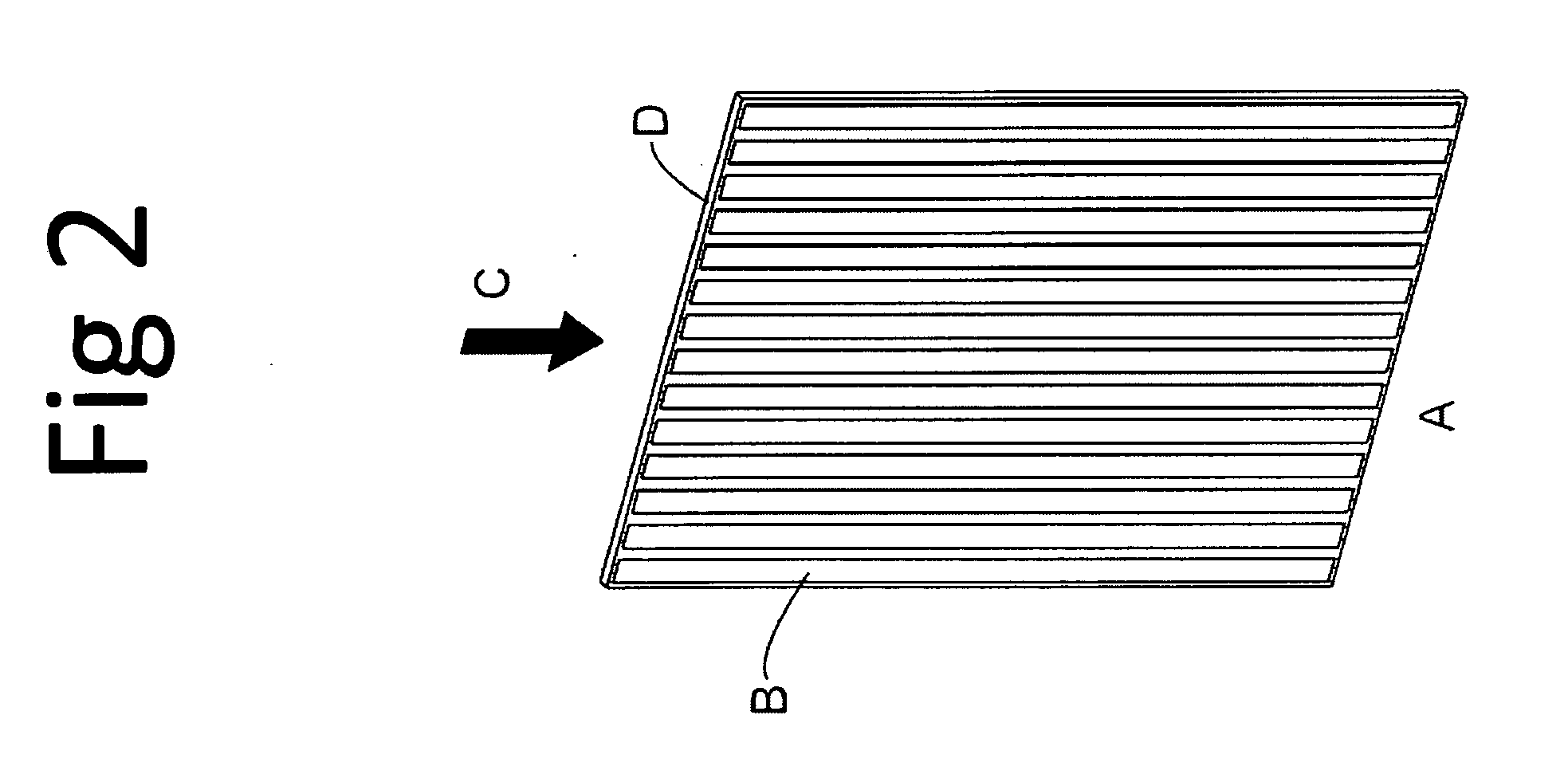Silicon detector assembly for x-ray imaging
a detector assembly and x-ray imaging technology, applied in the field of x-ray imaging, can solve the problems of destroying the “color” information in the image, reducing the resolution, and reducing the resolution
- Summary
- Abstract
- Description
- Claims
- Application Information
AI Technical Summary
Benefits of technology
Problems solved by technology
Method used
Image
Examples
Embodiment Construction
[0042]A basic idea is to provide a Silicon detector for x-ray imaging that is based on multiple semiconductor detector modules arranged together to form an overall detector area, where each semiconductor detector module comprises an x-ray sensor of crystalline Silicon oriented edge-on to incoming x-rays and connected to integrated circuitry for registration of x-rays interacting in the x-ray sensor through the photoelectric effect and through Compton scattering and for an incident x-ray energy between 40 keV and 250 keV to provide the spatial and energy information from these interactions to enable an image of an object. Further, anti-scatter modules are interfolded between at least a subset of the semiconductor detector modules to at least partly absorb Compton scattered x-rays.
[0043]As mentioned, semiconductor detector modules, each including an x-ray sensor, are tiled together to form a full detector of almost arbitrary size with almost perfect geometrical efficiency except for a...
PUM
 Login to View More
Login to View More Abstract
Description
Claims
Application Information
 Login to View More
Login to View More - R&D
- Intellectual Property
- Life Sciences
- Materials
- Tech Scout
- Unparalleled Data Quality
- Higher Quality Content
- 60% Fewer Hallucinations
Browse by: Latest US Patents, China's latest patents, Technical Efficacy Thesaurus, Application Domain, Technology Topic, Popular Technical Reports.
© 2025 PatSnap. All rights reserved.Legal|Privacy policy|Modern Slavery Act Transparency Statement|Sitemap|About US| Contact US: help@patsnap.com



